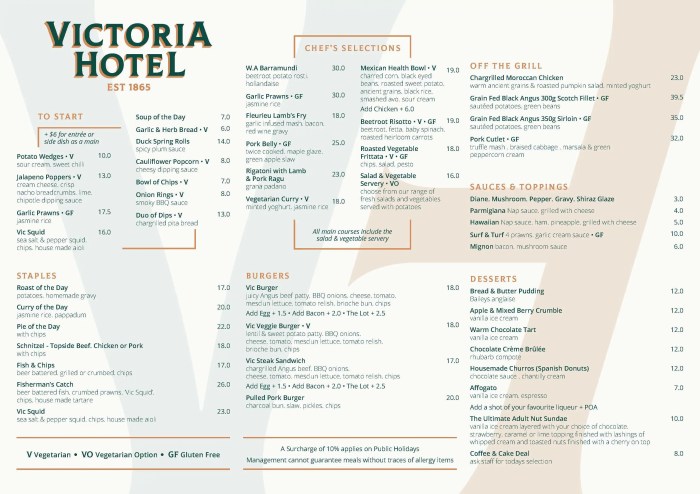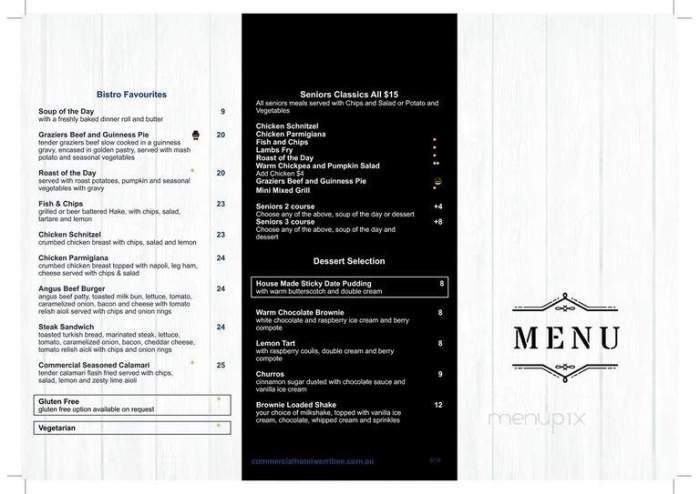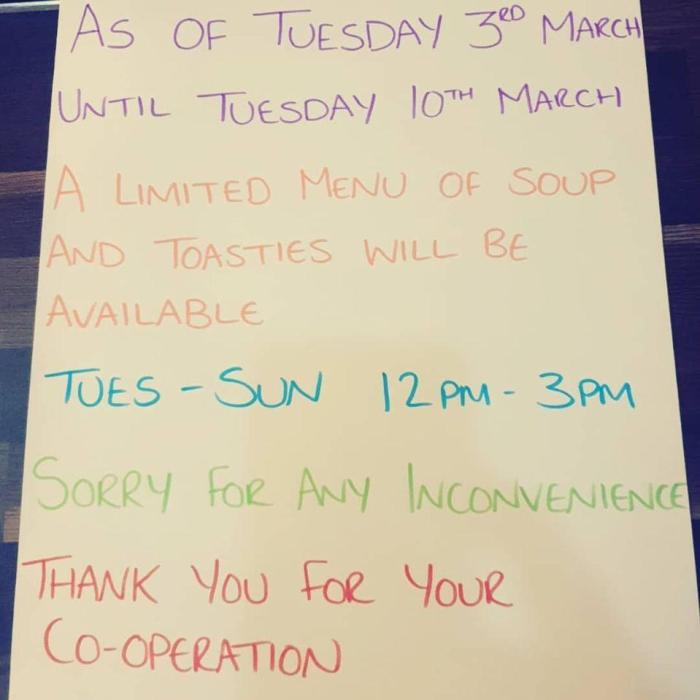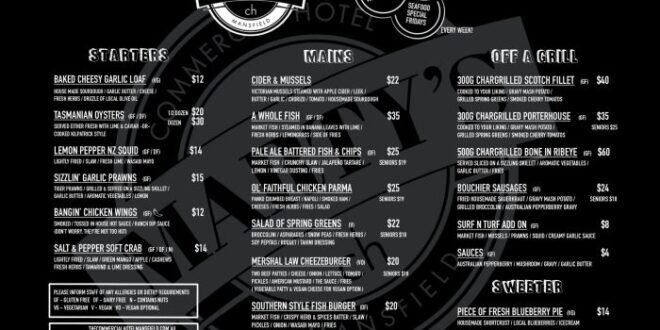In the realm of hospitality, the commercial hotel menu stands as a culinary ambassador, reflecting the essence of the establishment and tantalizing guests with its delectable offerings. From design to content and pricing, every aspect of a hotel menu plays a crucial role in shaping the dining experience and driving revenue.
This guide delves into the intricacies of crafting an effective commercial hotel menu that not only satisfies guests’ appetites but also enhances their overall stay.
The content of the second paragraph that provides descriptive and clear information about the topic
Menu Design

A well-designed menu not only reflects the hotel’s ambiance but also enhances the dining experience. Here are key considerations for creating an effective menu design:
Visual Appeal:The menu should be visually appealing, with an attractive layout and color scheme that complements the hotel’s decor. High-quality images or illustrations of dishes can stimulate the appetite and create a sense of anticipation.
Commercial hotel menus often cater to a wide range of tastes and preferences, offering a diverse selection of dishes to suit different dietary needs and culinary desires. Take, for instance, the menu at Beaches Hotel Merewether , which boasts an array of delectable options, from classic pub fare to modern Australian cuisine.
This variety ensures that guests can find something to satisfy their cravings, whether it’s a hearty steak or a refreshing seafood platter.
Menu Organization
Clear organization is essential for easy navigation. Divide the menu into distinct sections, such as appetizers, entrees, desserts, and beverages. Within each section, group similar items together and use subheadings or descriptive text to guide guests through the menu.
Typography and Readability
Choose fonts that are easy to read, avoiding overly ornate or small typefaces. Use clear font sizes and ample white space to ensure readability, especially in low-light conditions. Highlight important items or sections with subtle design elements, such as bolding or italics.
Descriptive Language
Use descriptive language to entice guests and provide them with a clear idea of each dish. Avoid using overly technical or ambiguous terms, and ensure that the descriptions are accurate and appetizing. Consider including brief notes on ingredients, cooking methods, or special dietary considerations.
Menu Materials and Durability
Choose durable materials that can withstand repeated handling and spills. Consider laminated menus or high-quality cardstock to ensure longevity. The menu should be easy to clean and maintain, especially in high-traffic areas.
Menu Content

The menu of a hotel plays a crucial role in attracting and satisfying guests. It should offer a diverse range of dishes to cater to various dietary preferences and tastes. Detailed descriptions of each dish, including ingredients, preparation methods, and flavors, help guests make informed choices and enhance their dining experience.
Signature Dishes and Seasonal Specials
Highlighting signature dishes and seasonal specials can entice customers and create a sense of exclusivity. Signature dishes are unique creations that showcase the culinary expertise of the hotel’s chefs. Seasonal specials take advantage of fresh, locally sourced ingredients and reflect the changing seasons.
Menu Pricing

Establishing competitive pricing is crucial for a hotel menu. Consider the target market and their expected budget. Value-added options like set menus or tasting platters can enhance customer satisfaction and perceived value.
Commercial hotel menus are meticulously designed to cater to the diverse tastes of travelers. They typically offer a wide selection of dishes, ranging from classic comfort foods to innovative culinary creations. For a glimpse into this culinary realm, explore the Belmont Hotel Menu . This renowned hotel’s menu showcases a tantalizing array of dishes, each carefully crafted to provide a memorable dining experience.
Whether you seek a hearty breakfast, a sophisticated lunch, or an elegant dinner, commercial hotel menus like the Belmont Hotel Menu offer an array of culinary delights to satisfy your cravings.
Transparency and Clarity, Commercial hotel menu
Provide clear and concise pricing information on the menu to avoid misunderstandings. This includes displaying prices for all items, including taxes and service charges. Accurate pricing instills trust and prevents any potential disputes.
Menu Optimization

Optimizing a menu is crucial for driving sales and enhancing the customer dining experience. By employing descriptive language, persuasive techniques, and regular updates, businesses can create a menu that effectively communicates the value and appeal of their offerings.
Commercial hotel menus often reflect the local cuisine and culture, offering a glimpse into the region’s culinary traditions. One such example is Beretta’ , a renowned hotel in Langwarrin, Australia. Their menu features a delectable array of modern Australian dishes, showcasing the finest local ingredients and flavors.
From succulent steaks to fresh seafood and innovative vegetarian options, Beretta’ menu caters to a wide range of tastes and preferences, making it a must-visit destination for discerning diners.
Descriptive Language and Evocative Imagery
Using descriptive language and evocative imagery paints a vivid picture of the dishes, enticing customers to order. Highlight unique flavors, textures, and ingredients to create a sensory experience that sparks desire. For example, instead of “Chicken Salad,” use “Grilled Lemon-Herb Chicken Salad with Fresh Arugula and Creamy Parmesan Dressing.”
Commercial hotel menus often feature an array of delectable dishes that cater to diverse tastes. While culinary delights are essential for a memorable dining experience, it’s equally crucial to consider the well-being of beneficial insects that play a vital role in our ecosystem.
In this regard, “Caterpillar Hotels: A Haven for Beneficial Insects” ( Caterpillar Hotels: A Haven for Beneficial Insects ) offers an innovative approach to support these insects by providing them with shelter and food sources. This initiative not only enhances biodiversity but also benefits the hotel industry by attracting nature-loving guests and promoting sustainable practices.
This detailed description evokes a more appetizing image.
Commercial hotel menus are curated to offer a wide variety of dishes that cater to diverse tastes and dietary preferences. They often include a range of options, from classic comfort food to gourmet delights. If you’re looking for a convenient and budget-friendly option, consider exploring Brisbane Hotel Deals with Breakfast: A Guide to the Best Options . This guide provides valuable insights into the best hotel deals in Brisbane that include breakfast, ensuring a satisfying start to your day.
Upon returning home, you can easily recreate your favorite dishes from the commercial hotel menu, bringing the flavors of your vacation into your own kitchen.
Persuasive Techniques
Employ persuasive techniques to subtly encourage customers towards specific dishes. Use action verbs that create a sense of urgency or excitement, such as “Savor” or “Indulge.” Highlight popular items with phrases like “Our Bestseller” or “Customer Favorite.” Additionally, use suggestive pricing or offer limited-time promotions to drive sales.
Regular Menu Updates
Regularly updating the menu ensures it remains fresh and relevant. This allows businesses to reflect seasonal availability of ingredients, incorporate customer feedback, and introduce new dishes to keep the menu exciting. By staying attuned to customer preferences and market trends, businesses can optimize their menu to maximize sales and customer satisfaction.
Menu Presentation
The way a menu is presented can significantly impact the dining experience. Here are some tips to enhance menu presentation:
Consider using high-quality paper for printed menus or utilizing digital displays to provide a more sophisticated and immersive dining experience. Table tents or chalkboards can be used to highlight daily specials or promotions, adding a touch of personalization and exclusivity.
Ensuring Menu Quality
Ensuring that menus are clean, presentable, and free from errors is essential. This includes regular cleaning and maintenance of physical menus and ensuring digital displays are updated and functioning correctly. Attention to detail in menu presentation conveys professionalism and care, contributing to a positive dining experience.
Last Point

By adhering to the principles Artikeld in this guide, hoteliers can create commercial hotel menus that are both visually appealing and functionally effective. A well-designed menu can elevate the dining experience, increase guest satisfaction, and ultimately drive profitability. Remember, a commercial hotel menu is not merely a list of dishes; it is a culinary masterpiece that reflects the hotel’s brand, entices guests, and leaves a lasting impression.
Quick FAQs: Commercial Hotel Menu
What are the key elements of a successful commercial hotel menu?
A successful commercial hotel menu should prioritize aesthetics, organization, diversity, and clarity. It should feature visually appealing designs, well-organized sections, a wide range of dishes, and detailed descriptions.
How can menu pricing impact hotel revenue?
Menu pricing plays a significant role in determining hotel revenue. Competitive pricing that aligns with the target market, value-added options, and clear pricing information can enhance profitability.
What is the importance of menu optimization?
Menu optimization involves using persuasive language, evocative imagery, and regular updates to encourage customer orders, increase guest satisfaction, and reflect seasonal availability and customer feedback.
